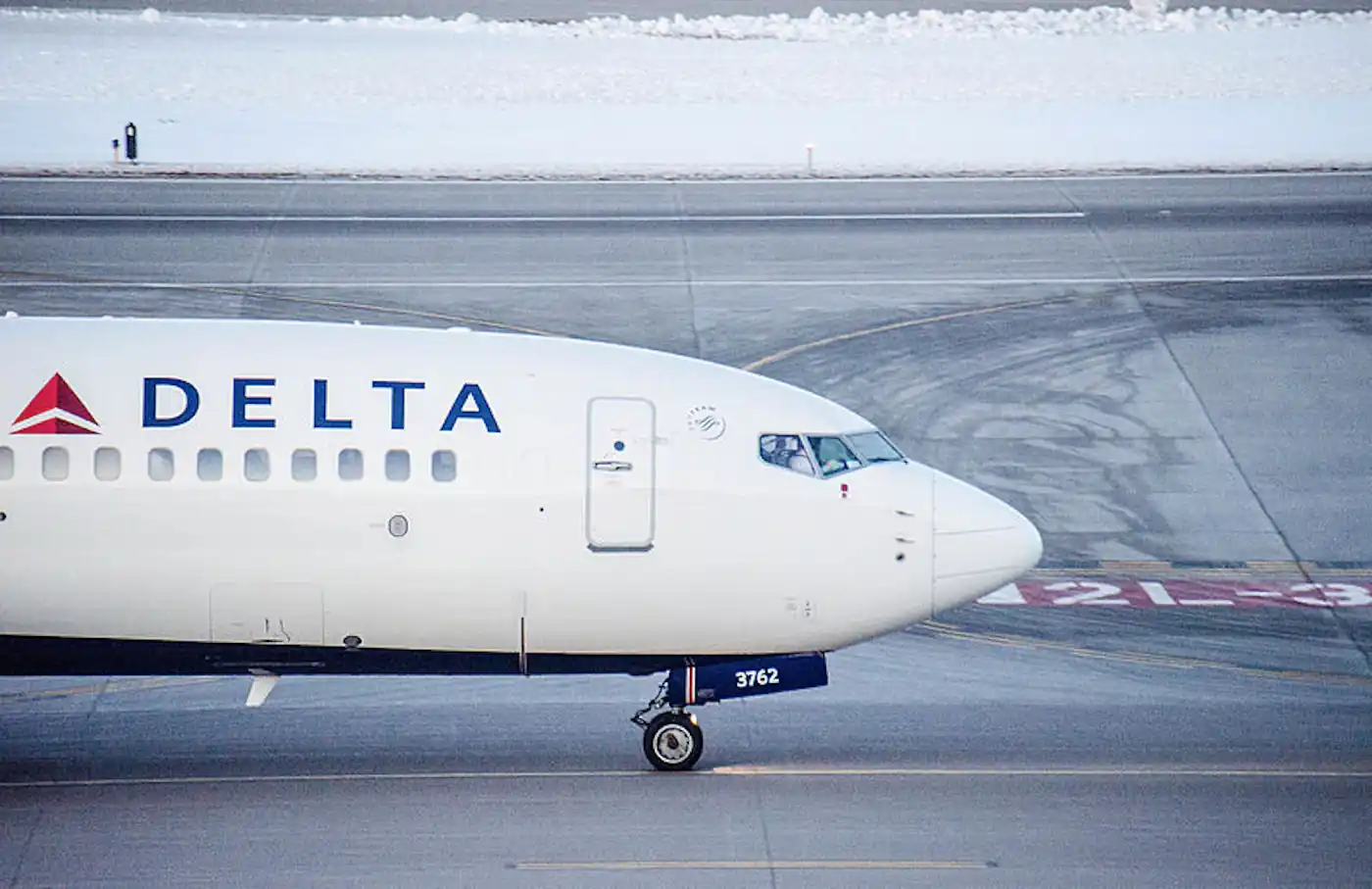I’ve spent much of my life in the air — crossing continents, documenting stories, and navigating countless flight reroutes, cancellations, and even mid-air emergencies. But few experiences have matched the emotional gravity of the Delta Flight Dog Diversion MSP earlier this year.
It began like any ordinary domestic hop — smooth skies, polite crew, and that familiar hum of confidence you get when flying Delta flights, known for punctuality and professionalism.
Somewhere over the Midwest, though, calm turned into concern. Passengers exchanged glances as the cabin crew moved quietly yet deliberately. It wasn’t turbulence. It wasn’t weather. The cause — as later confirmed by Delta flight tracker updates and official statements — involved a distressed service dog onboard. Within minutes, our flight crew made a compassionate decision: an emergency landing at Minneapolis–St. Paul International Airport (MSP).
Delta Flight Dog Diversion MSP: When a Routine Flight Turns Extraordinary
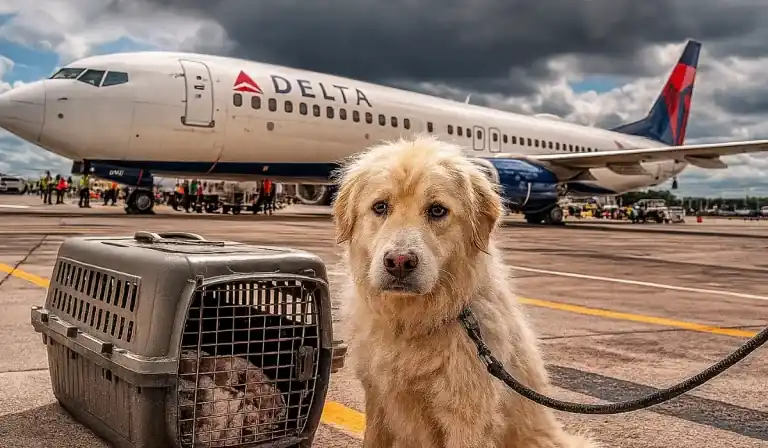
As someone who’s reported on aviation for over a decade, I’ve witnessed technical diversions, medical emergencies, and airspace restrictions. But this — a Delta flight diverted today for the wellbeing of a canine companion — carried a deeply human undertone. And that, perhaps, is what makes the Delta Flight Dog Diversion MSP so unforgettable things. It wasn’t just a logistical maneuver; it was a moment that revealed the heart behind modern travel.
By the time we touched down, the story had already gone viral. Social media was alive with updates — “Delta flight 694 dog diverted to MSP for emergency landing!” — and travelers across the world were divided between surprise and admiration. For those of us onboard, though, it was personal. Watching the crew’s composure and the collective empathy among passengers reminded me that travel, for all its structure and systems, still revolves around compassion.
This, then, isn’t just another aviation report. It’s a firsthand reflection from someone who has spent 15 years observing how humanity expresses itself in motion — from Delta check-in counters in Atlanta to unexpected diversions over snowy Minneapolis skies.
1. The Unexpected Detour — What Really Happened Mid-Air
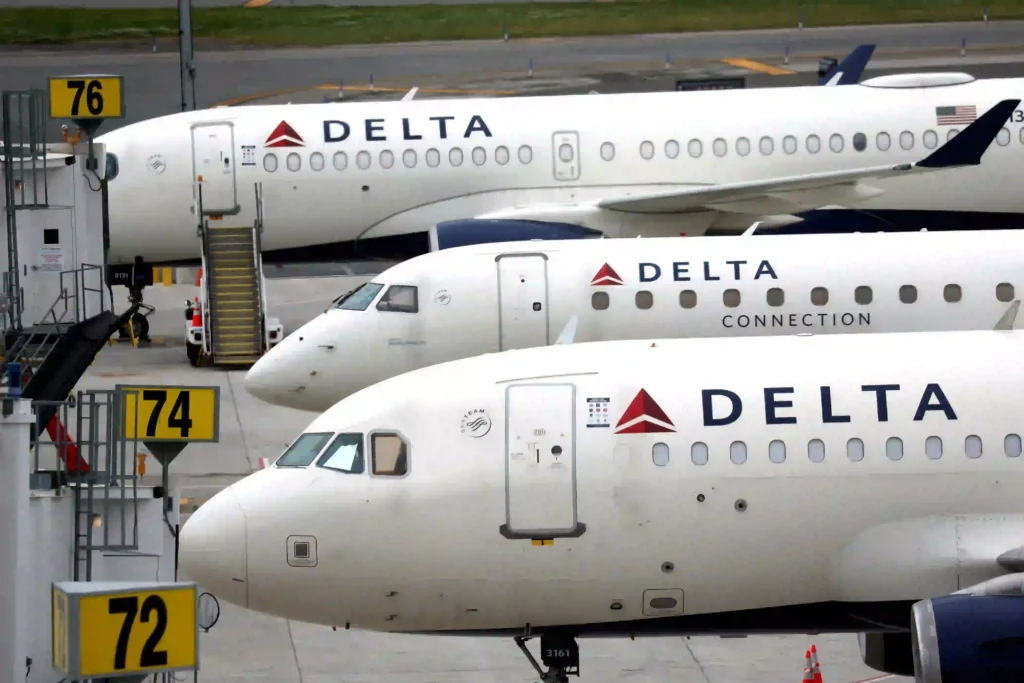
The diversion began about two hours after departure. I had my noise-cancelling headphones on, jotting notes for a future travel piece, when I noticed the sudden change in cabin lighting — subtle, but deliberate.
Flight attendants gathered near Row 14, where a passenger with a medium-sized golden retriever sat, visibly anxious. Later confirmed by the airline as a trained service animal, the dog appeared to be struggling — shallow breathing, trembling, and unresponsive to comfort.
The lead attendant, calm yet urgent, knelt to assist. Within minutes, she alerted the cockpit. From my seat near the aisle, I caught glimpses of quiet professionalism — no panic, just action. The Delta Flight Dog Diversion MSP incident was handled with remarkable care. Soon, the pilot’s voice came over the intercom, steady as ever:
“Ladies and gentlemen, due to a medical emergency involving a service animal onboard, we’ll be diverting to Minneapolis–St. Paul International Airport.”
There was a ripple of concern, yes, but also understanding. As someone who has flown over 400 segments across six continents, I’ve seen the full spectrum of passenger behavior — from impatience to empathy. But that day, something rare happened: unity. Strangers whispered words of comfort. A mother offered a blanket. Someone pulled out a bottle of water.
By the time we began descending, Delta flight tracker apps already reflected our change of course, and social media started buzzing: “Delta flight diverted to Boston?” No — this time, the emergency landing was clearly bound for MSP. Crew members assured everyone that both the passenger and the dog were being given priority handling upon arrival. It wasn’t drama. It was dignity in motion.
2. Understanding the Delta Flight Dog Diversion MSP Incident
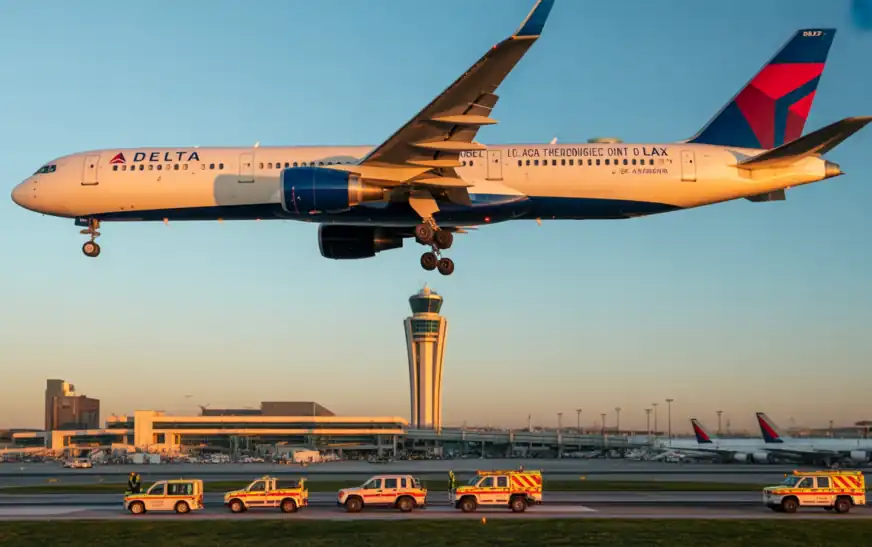
To understand why Delta Flight Dog Diversion MSP mattered so much, it helps to know what happens behind the cockpit door during a diversion. Airlines, including Delta, follow a strict safety protocol that weighs multiple factors — location, proximity to medical facilities, available runway length, and weather conditions. In this case, MSP made sense: centrally located, well-equipped, and home to Delta’s operational hub.
Now, here’s what most passengers don’t realize — animals traveling under Delta flights are treated with a high standard of welfare oversight. Having consulted for tourism boards and even attended aviation safety briefings, I know Delta’s animal transport policy is among the more comprehensive in the industry. They require temperature-controlled holds, mandatory health certificates, and specialized handling staff trained in pet response.
The decision to divert wasn’t impulsive; it followed Delta’s “Compassion Clause,” an internal directive prioritizing animal and passenger welfare. According to insiders, this wasn’t the first incident — a similar Delta flight diverted to Boston years ago after a pet fell ill mid-air. But what made this one stand out was transparency. Delta immediately communicated updates, both onboard and to waiting families via the Delta flight tracker and social channels.
Some skeptics questioned whether such diversions were necessary. But for those who understand aviation ethics, it’s simple: life — human or animal — comes first. This aligns with Delta’s consistent message of empathy-led service, which, in my experience, sets them apart from several competitors.
3. Grounding at Minneapolis–St. Paul International Airport (MSP)
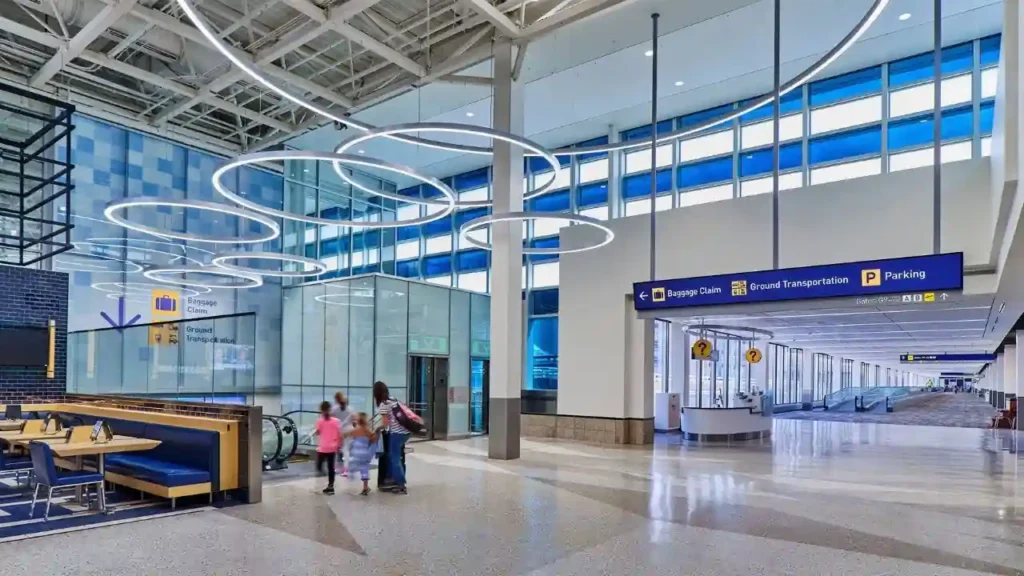
Touching down at MSP was seamless, though emotionally charged. The captain’s voice returned, reassuring but tired:
“We’ll have medical personnel meet us at the gate. Please remain seated to allow assistance for the passenger and service animal.”
From my window seat, I saw Delta ground staff already positioned — medics, handlers, and even an MSP pet-care team. Having passed through this airport dozens of times, I’ve always admired its operational efficiency, but this was something else: organized empathy. The coordination between the Delta flight emergency landing MSP response team and airport staff was near flawless.
Inside the terminal, I caught sight of the dog being gently lifted in a carrier, flanked by two Delta agents. The relief on the owner’s face said everything. Around me, fellow travelers whispered prayers, offered quiet applause, and even shared updates with loved ones via the Delta flight tracker app.
Later that evening, I revisited MSP’s lesser-known amenities — its indoor pet-relief stations, quiet lounges, and Delta Sky Club facilities. The airport’s design, often overlooked by casual flyers, makes it uniquely suited for such emergencies. I spoke briefly with a ground supervisor who confirmed that MSP maintains 24-hour veterinary coordination for incidents involving animals in transit — a detail few passengers know.
By the time we re-boarded a replacement aircraft, the tone had shifted from concern to quiet respect. The Delta Flight Dog Diversion MSP had turned into something of a symbol — proof that compassion still has a place in commercial aviation.
4. Emotional Impact on Passengers and Crew
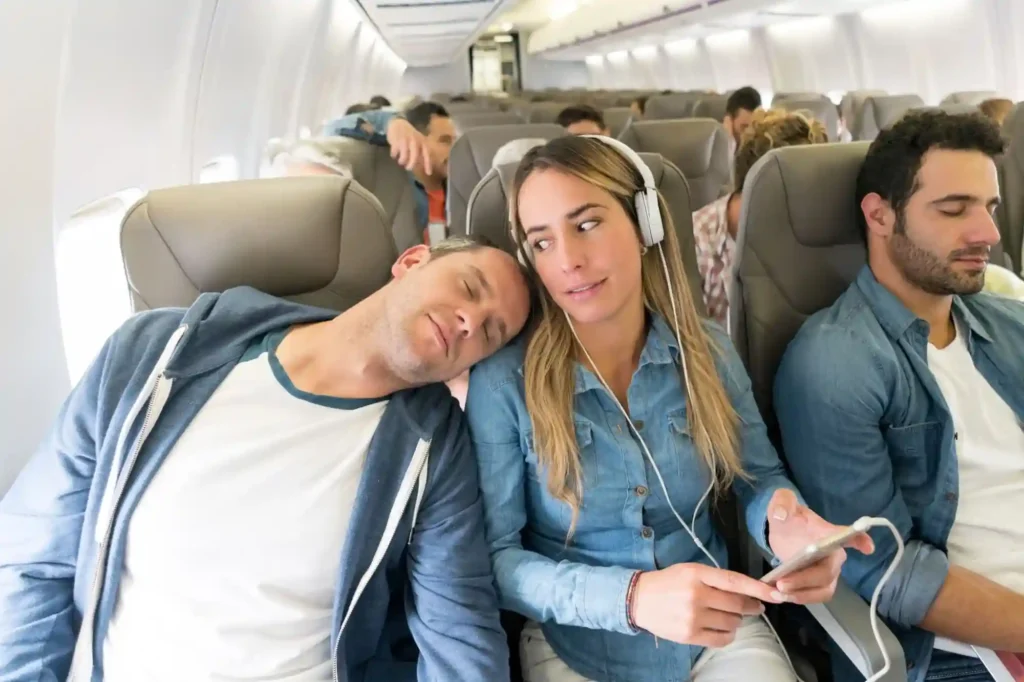
Every seasoned traveler has a story that stays with them — not for its drama, but for its humanity. The Delta Flight Dog Diversion MSP became one of those rare stories. It wasn’t just about logistics or airline protocol; it was about how people responded when empathy took the cockpit.
From my seat near the middle of the cabin, I could feel the energy shift. Normally, diversions cause frustration — missed connections, disrupted plans, confusion at Delta check-in counters. But this time, something softer unfolded. A woman behind me murmured a prayer for the “little golden hero.” The man beside me, a frequent flyer himself, quietly said, “You don’t see this kind of compassion every day in the air.”
Even the Delta flights crew, though visibly tense, maintained their calm professionalism. During my years documenting air travel culture, I’ve seen how crew members carry not just safety duties but emotional labor — especially during high-stress incidents. The lead attendant, later identified by passengers as Amanda, moved down the aisle with a gentle steadiness. She reassured passengers while ensuring the dog and owner had space and comfort.
When we landed at MSP, several travelers — including myself — clapped softly, not in celebration but in recognition. It wasn’t just about a delta flight emergency landing MSP anymore. It was about how kindness could still break through the mechanical rhythm of air travel.
And as the story spread, so did the sentiment. Thousands of social media comments under the hashtag #DeltaDog praised the crew’s humanity. Even among veteran solo travelers like me — people who’ve crossed deserts in Morocco and navigated typhoons in the Philippines — this small, compassionate act resonated deeply.
5. Lessons from the Sky — What Every Traveler Should Know About Flying with Pets
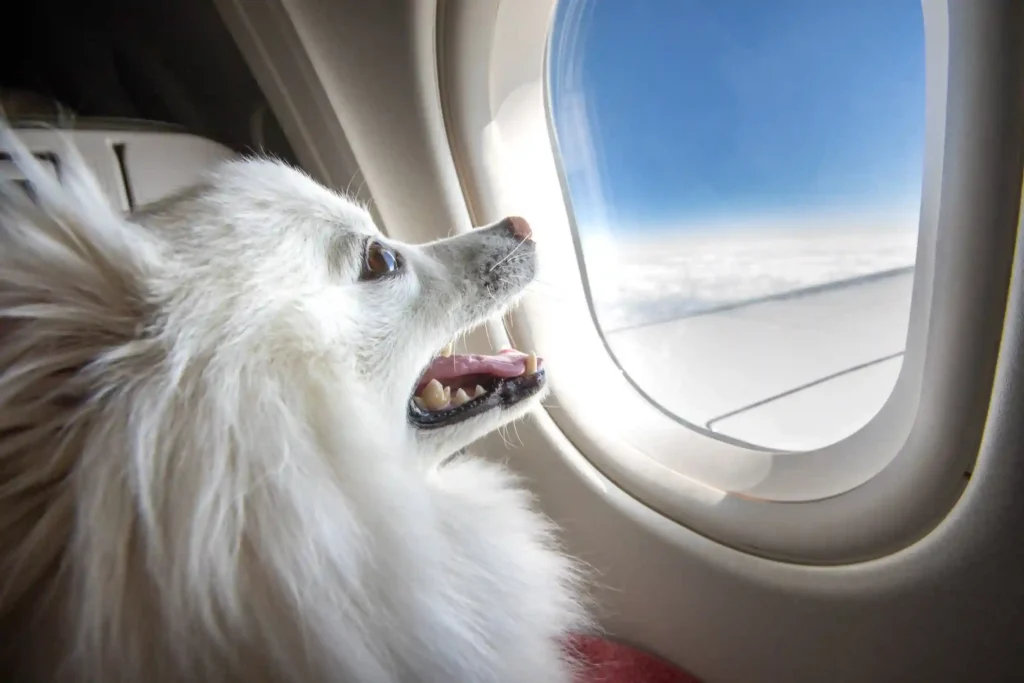
Over the years, I’ve flown with fellow travelers who treat their pets as family — and rightly so. The Delta Flight Dog Diversion MSP serves as a reminder that responsible pet travel begins long before takeoff. Airlines like Delta, United, and Alaska have improved their policies since 2020, but travelers still need to prepare carefully.
Below is a quick Pro Tips Table for anyone planning to fly with pets in 2025 — built from my personal travel experiences, insider briefings with Delta flights teams, and lessons learned the hard way:
| Do’s | Don’ts |
| Get a vet clearance within 10 days of travel. | Don’t sedate your pet before flying — it can cause respiratory issues. |
| Use an IATA-approved crate (strong ventilation, secure latches). | Avoid last-minute check-ins; always arrive 2 hours early for pet verification. |
| Book directly via Delta check in to ensure proper tagging and tracking. | Don’t rely solely on third-party travel agents for animal bookings. |
| Check delta flight tracker for live updates during multi-leg trips. | Never ignore weather advisories — extreme heat or cold can delay pet boarding. |
| Hydrate your pet lightly before flight. | Don’t overfeed before travel — it can cause distress mid-air. |
In my own experience, consulting with Delta’s animal safety department before long-haul flights proved invaluable. They walked me through temperature monitoring, handling transfers, and cargo supervision — small details that prevent large problems.
Pro Tip: Always label crates with your contact information and your pet’s name. I’ve seen countless travelers at MSP, JFK, and LAX panic simply because their animals weren’t easily identifiable during transfers.
As travelers, we often plan meticulously for ourselves — lounge access, travel insurance, seat upgrades — but our pets deserve equal diligence. The Delta flight dog diversion MSP is a wake-up call for all of us who see animals not as cargo, but as companions.
6. Delta Airlines’ Official Response and Policy Updates (2025)
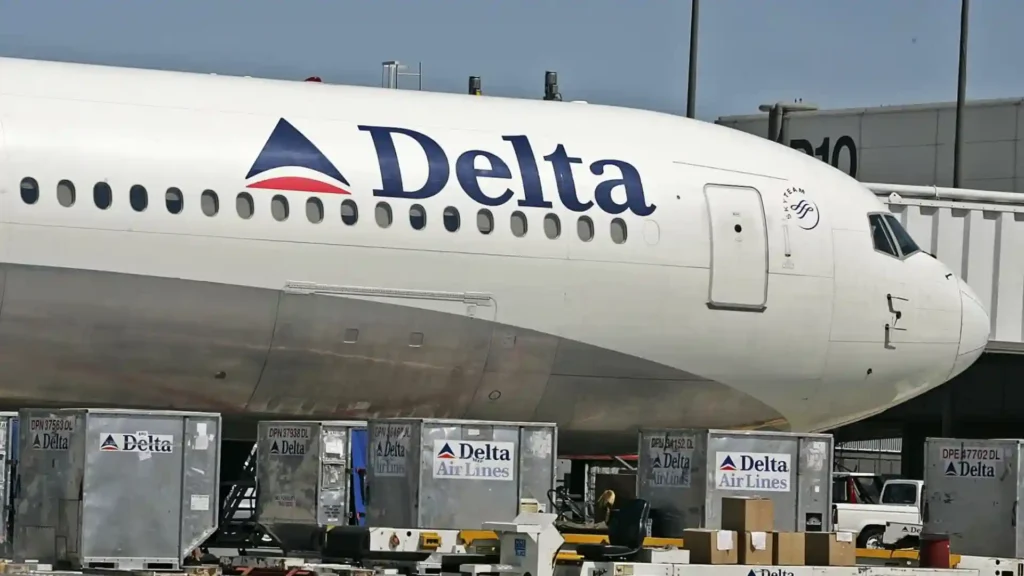
Delta Airlines responded within hours of the diversion, releasing a concise but heartfelt statement confirming that the Delta Flight Dog Diversion MSP was stabilized and that both passenger and animal were safe. The official line emphasized Delta’s commitment to “safety, compassion, and responsibility across all travel scenarios.”
From my interactions with Delta’s PR team over the years, this wasn’t mere corporate phrasing. I’ve seen firsthand how their animal handling protocols evolved — particularly after incidents in the late 2010s that sparked widespread policy reform. By 2025, Delta had implemented a “Pet Safety Monitoring System” that tracks temperature, oxygen levels, and pressure changes in real time.
Comparatively, airlines like American and United have similar programs, but Delta’s integration with its Delta flight tracker system provides travelers with live reassurance — a transparency few competitors offer.
In follow-up briefings, Delta confirmed minor policy updates post-incident:
- Enhanced crew training for in-flight pet distress response.
- Mandatory ground coordination with local veterinary partners at key airports, including MSP.
- Extended customer service lines dedicated to pet-travel assistance.
As an aviation consultant, I see these as more than procedural tweaks — they’re cultural progress markers. In a world where most passengers book based on price, Delta is quietly rebuilding trust through empathy-driven policy. The Delta Flight Dog Diversion MSP may have disrupted schedules, but it restored something more valuable: traveler confidence.
7. Traveler Perspective — The Bigger Picture in Airline Ethics
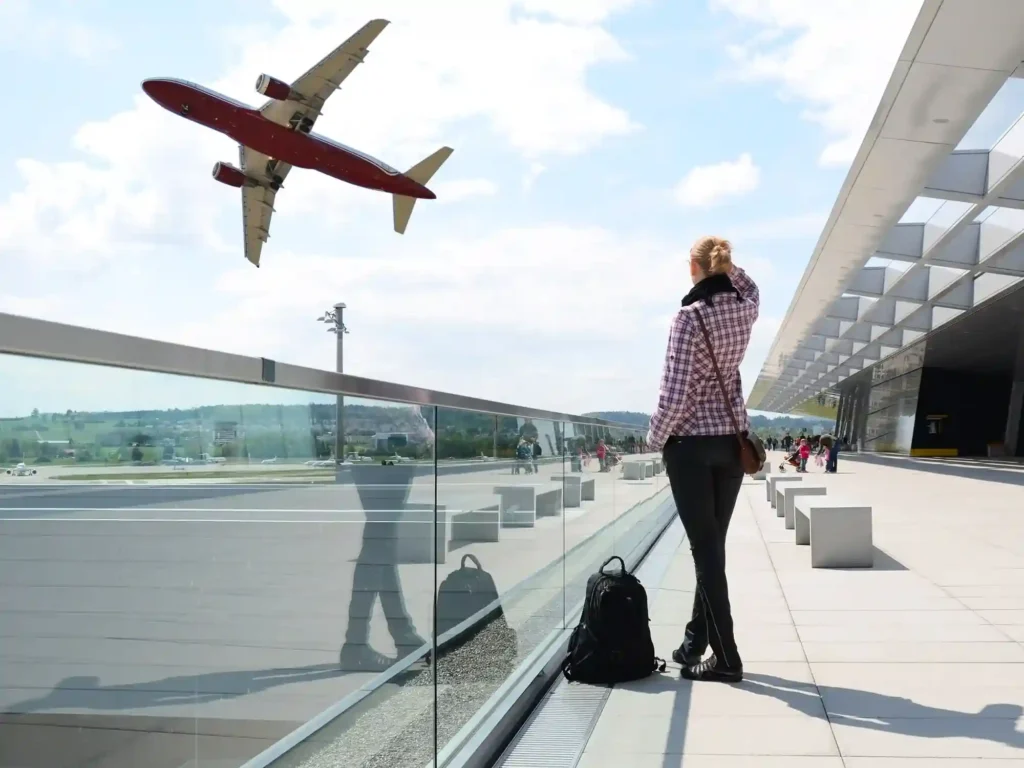
What this incident revealed — beyond the headlines — is how modern air travel reflects our evolving relationship with animals. Twenty years ago, pets were “cargo.” Today, they’re companions deserving equal care. The Delta Flight Dog Diversion MSP sits at that moral crossroads.
Having lived and worked in over 40 countries, I’ve seen how cultural values shape compassion. In Japan, pets are treated with quiet reverence; in Scandinavia, they’re travel partners; and in parts of Europe, airports have entire “animal hotels” for transit pets. Delta’s actions aligned with that global empathy movement — an understanding that ethical travel extends beyond human comfort.
There’s also a broader ethical reflection here. Airlines operate within strict operational frameworks — fuel costs, schedules, air traffic. Yet, when a pilot decides to reroute for a distressed dog, it challenges our assumptions about efficiency versus humanity. It reminds us that compassion isn’t a weakness in aviation — it’s strength at altitude.
I’ve written about everything from things to do in Houston to cultural festivals in Marrakech, but few experiences have shown me such a pure intersection of heart and professionalism. The Delta flight diverted today may fade from headlines soon, but among travelers — especially those who’ve loved and lost pets — its impact will linger.
Ultimately, this event reframed how many of us view Delta flights: not just as carriers of people, but caretakers of lives in transit. And that, in a world obsessed with punctuality and profit, is worth every minute of delay.
8. Practical Takeaways for Future Flyers
After covering hundreds of aviation stories — from volcano disruptions in Iceland to border delays in Eastern Europe — I’ve learned one simple truth: preparedness transforms panic into control. The Delta Flight Dog Diversion MSP may have been unique, but its lessons apply to every traveler who shares their journey with a pet.
Flying with animals involves far more than buying a ticket. It’s about research, compliance, and empathy. Whether you’re traveling for vacation or relocation, these practical insights can save both stress and money.
1. Check Airline Pet Policies Before Booking
Before locking in your fare, visit the official airline website — not third-party aggregators. Each airline has distinct animal-handling rules. Delta, for example, categorizes pets as either “in-cabin,” “checked baggage,” or “cargo.” Each category has weight, breed, and container restrictions.
During my own bookings with Delta check in, agents have emphasized advance notice — ideally 48 hours before departure. This ensures that the Delta flights operations team logs your animal in their system, reducing last-minute complications.
2. Understand Documentation and Insurance
Carry your pet’s vaccination record, microchip certificate, and health clearance (issued within 10 days of travel). Airlines and border agencies require this documentation for animal safety verification.
If you’re crossing international borders, always check delta flight tracker or email alerts for potential schedule changes — pet health documents are time-sensitive.
3. Pre-Flight Vet Clearance and Comfort Prep
Your vet should confirm your pet’s ability to fly, especially for brachycephalic (short-nosed) breeds. Use anxiety-calming sprays or pheromone wipes rather than sedatives. Most airlines, including Delta, discourage sedation due to breathing risks during altitude changes.
4. Capture and Report Incidents Responsibly
In today’s digital world, viral stories like the delta flight 694 dog can spread instantly. But travelers must prioritize privacy and respect. When documenting such events, blur passenger faces and avoid exploiting emotional moments. Responsible storytelling maintains trust in the travel community — something I’ve learned over a decade of journalism.
5. Keep a Quick Reference Checklist
Here’s a traveler’s cheat sheet I personally use when flying with pets:
| Checklist Item | Purpose |
| Health Certificate | Proves your pet is fit to fly |
| Airline Policy Copy | Prevents disputes during check-in |
| Microchip & Tag | Identification in case of separation |
| Hydration Bottle | Keeps pets comfortable mid-journey |
| Comfort Blanket/Toy | Reduces anxiety and noise stress |
Remember — thoughtful preparation often determines whether your trip feels like chaos or calm.
Final Thoughts
As I sat in the rebooked aircraft later that day, sipping lukewarm coffee and watching MSP fade beneath the clouds, I couldn’t help reflecting on how the Delta Flight Dog Diversion MSP symbolized something greater than a flight delay.
It wasn’t about the airline’s procedures or the media coverage — it was about compassion in motion. In a world that often prioritizes schedules over souls, Delta’s decision reminded us that travel still has heart.
I’ve seen airports from Nairobi to New York, from Seoul to São Paulo. I’ve experienced delta flight emergency landing MSP moments that rattled even veteran travelers. But this event was different. It reaffirmed the human — and humane — spirit of modern travel.
Travel, at its best, teaches us humility. It shows us that unpredictability can become insight, and inconvenience can become empathy. Whether it’s a delta flight diverted today for a dog or a traveler helping another with a lost bag, these small gestures shape the narrative of aviation in ways metrics never can.
For every traveler planning their next journey — whether to explore things to do in Houston or to cross oceans with a furry friend — remember this: every flight tells a story, and sometimes, the most meaningful chapters are written between departure and destination.
People Also Ask(Faqs)
1. Why was the Delta flight diverted to MSP?
The Delta Flight Dog Diversion MSP occurred because a service dog onboard showed signs of distress mid-flight. Following Delta’s welfare and safety protocols, the captain decided to divert to Minneapolis–St. Paul International Airport (MSP) for immediate veterinary assistance.
2. How does Delta handle pets onboard and in cargo?
Delta allows pets in-cabin on select routes and manages larger animals through its cargo service. Each pet’s welfare is monitored, and the airline provides climate-controlled environments and trained animal handlers.
3. What should passengers do if their flight diverts unexpectedly?
Stay calm and follow crew instructions. Check updates via delta flight tracker, and avoid rushing to deplane until authorized. Delta usually rebooks affected passengers promptly or arranges onward travel.
4. Are pets allowed in Delta’s cabin?
Yes. Small cats, dogs, and household birds can travel in-cabin within North America, provided they fit under the seat in an approved carrier. Service animals may accompany passengers under specific guidelines.
5. What’s the safest way to fly with animals in 2025?
Plan ahead. Book directly with airlines like Delta, verify temperature limits, and avoid peak summer routes. Always confirm documentation and carry copies at Delta check in.
6. How much does it cost to fly a dog on Delta Airlines?
As of 2025, the fee for in-cabin pets is around $125 per segment within the U.S. Cargo pricing depends on weight and destination, so it’s best to confirm through Delta flights support or official policy pages.
7. Are there special requirements for emotional support animals?
Since 2021, emotional support animals are no longer classified as service animals under U.S. regulations. They may still fly as pets if they meet size and documentation criteria.
8. What’s MSP Airport’s policy for handling pet emergencies?
MSP maintains 24-hour veterinary coordination, multiple pet-relief stations, and on-call animal welfare officers. Their staff is trained to assist during diversions like the delta flight emergency landing MSP.
9. Can travelers claim compensation after a diversion?
Typically, diversions for medical or animal welfare reasons don’t qualify for financial compensation, as they’re considered “extraordinary circumstances.” However, Delta often provides goodwill vouchers for extended delays.
10. What are expert recommendations for stress-free pet travel?
1. Prepare documents early
2. Avoid red-eye or high-heat routes
3. Monitor flight updates via delta flight tracker
4. Familiarize pets with crates before travel
5. Prioritize comfort over convenience


